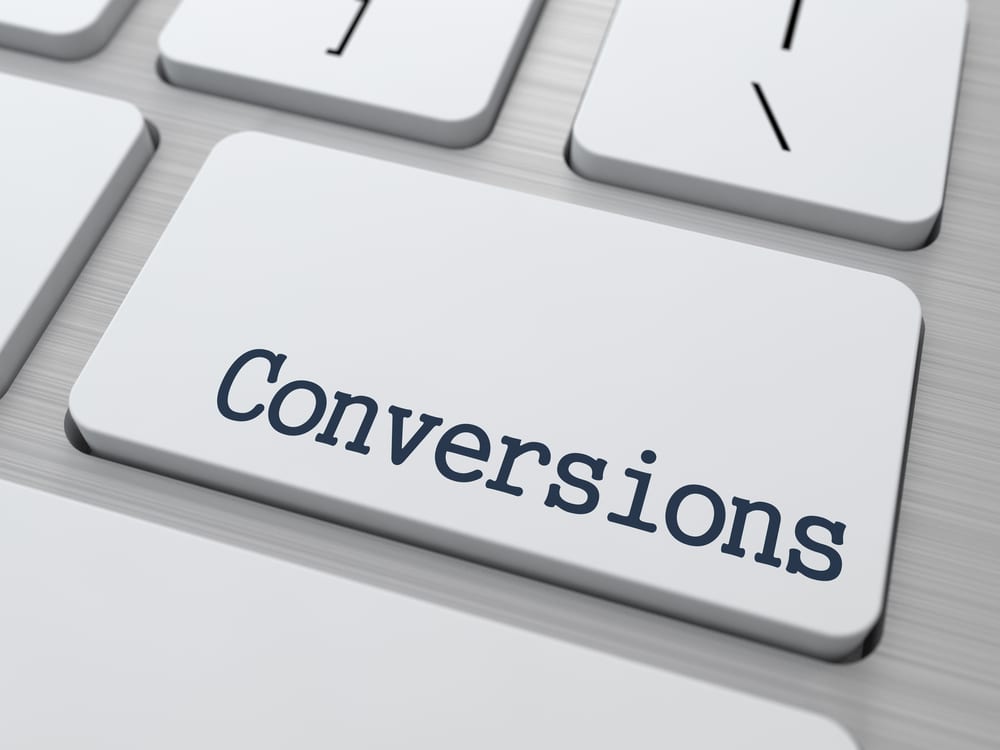Whatever industry, business or organisation you are in, a universal fact is that a website must perform. Good web design isn’t necessarily meant to look pretty — it exists for a much more specific purpose: to convert.
Websites are functional interfaces designed to serve at least one primary purpose. In most cases that will be to achieve more sales, receive more attention, attract more readers, obtain more leads, enlist more subscribers … you get the idea.
A “
What are potential customers looking for?
Customers look for solutions to their problems, not products. You don’t go shopping for a piece of clothing; you go shopping to solve your problem of not having any pants. You don’t browse Amazon.com for a book; you look for the answer to the crisis of not knowing what Miley Cyrus was up to when she was 12. The same theory applies online with your website. Your customers aren’t looking to buy your fancy new WordPress theme, they’re there to solve a problem: they don’t have a nice, easy to customise design for their blog.
Think about that for a second. How do you market a solution instead of a product? It’s quite simple when you step back and analyse what you’re actually offering. You promote the benefits of your product, not it’s features. Something your users can understand and relate to.
iPods don’t store 16 gigabytes of data, they hold 4,000 songs. Basecamp isn’t a web-based project management application built on Ruby on Rails, it’s a “better way to get projects done.” This is the mindset you must be in with your own product to truly connect on your users’ level.
Which of these two one-liners sells me better?
- I use HTML & CSS to produce standards-compliant hypertext documents for the world wide web.
- I make functional websites.
While the first option certainly tells you a lot more about the specifics, does it really sell? Think of your visitors first impression to your website as an elevator pitch. You have 7 seconds and 1004 x 580 pixels to sell yourself and open the funnel towards a conversion. Now answer that question again.
Applying a Marketing Pitch Model to your Page
The point I’m making is that you need to be as broad and brief as possible with your opening lines or “grabs” and use clever copy to funnel your users into the details. A good and high converting website is like a good business card. You want it look awesome but at the same time, you don’t want people to gloss over its design aspect too much. The idea is to keep the viewers engaged but at the same time, you want them to visit your branch or your website time after time to purchase the products.
A common approach to selling is the AIDA model. It works like this:
Attention: Make them listen
You draw your users to a certain part of your screen using fundamental design elements: white space for focus, animation to attract, colour to contrast, size for hierarchy. It’s always preferable to ensure this happens above the fold — that is to assume your users will not click anything on your site and will not scroll down past their regular browser cut-off point.
In most cases, at least half of your visitors will have left by now. This is considered a “bounce”. A bounce-rate represents the percentage of initial visitors to a site who move away to a different site, rather than continue on to other pages within the same site. A high priority for any website owners should be to get this rate as low as possible.
Interest: Make them want to know more
Use clever, solid copy to get them interested. Start to describe the benefits of your product or service — but keep it basic for now. The whole idea is to draw the line between what is too much and what will encourage a click-through. You can hit them with the details after they’ve made that decision.
Consider running A/B split-testing campaigns to find out what works best for your users. It’s impossible to know what will work without studying analytics, especially in the case of a new site — it’s not going to be perfect the first time around.
Desire: Tease them
If your user has come this far, they’re obviously keen on knowing more about your product, so tease them. Give them testimonials, screenshots and case studies. Show them you mean what you say by having proof to back it up. Make them want your product, not just enjoy the idea of it.
Action: Give it to them
Give them easy access to it. It’s so common for a designer to place a single call to action at the top of the page thinking users need to see it right away but that’s a fool’s mistake. How many people buy a product without reading about it or trying it out? How many people sign contracts without first glimpsing over what they’re agreeing to? No one. Filter your users towards your call to action, don’t hit them with it before you’ve even told them what your product is.
It’s fine to offer up a call to action at the top of the page as this helps returning visitors or those that might already be aware of your product quickly move on to the next stage. But those that are new to your brand are going to need to go through the full funnel.
Image: Shutterstock


